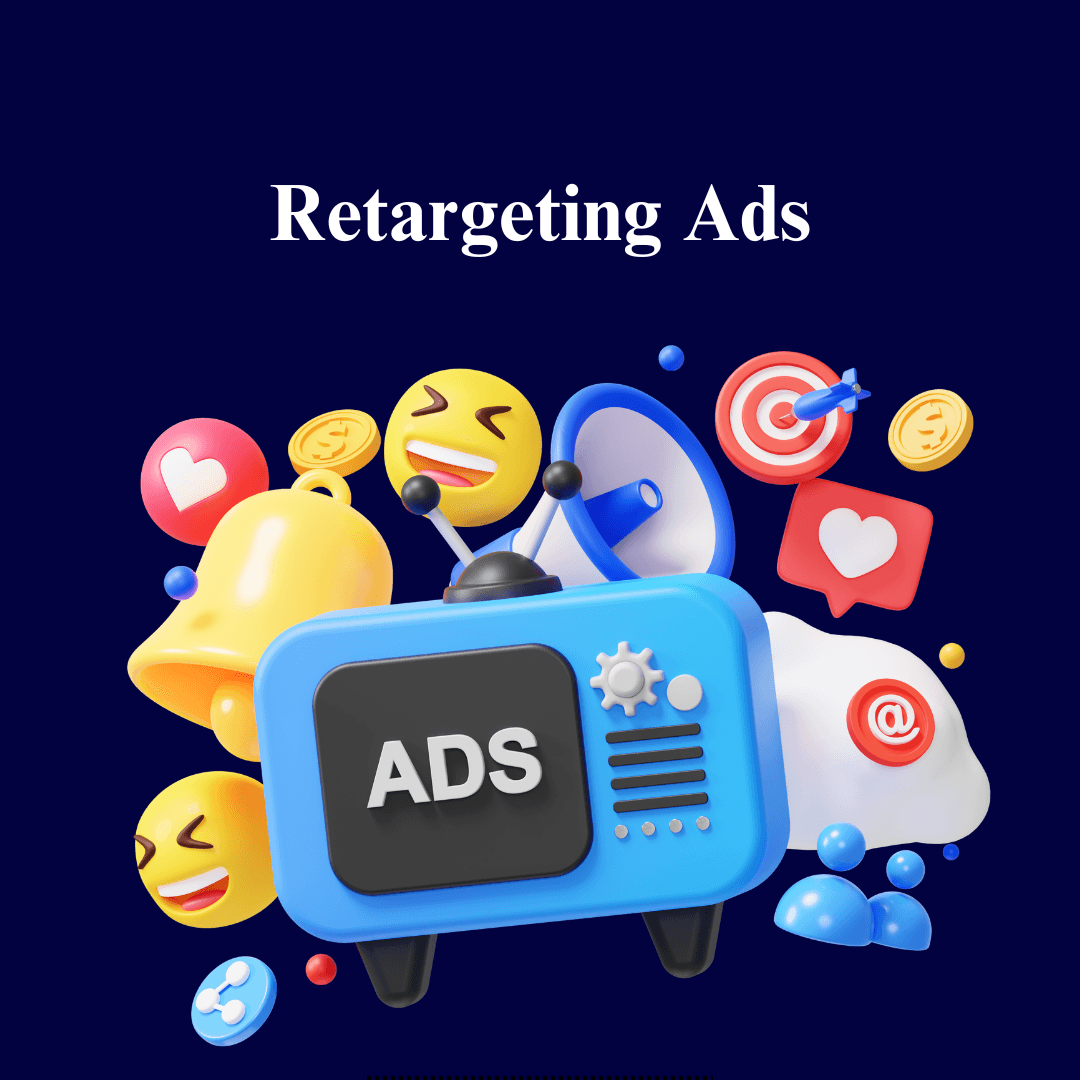Retargeting ads, also known as remarketing, have become a key element of successful digital marketing strategies. In simple terms, retargeting ads allow businesses to re-engage users who have previously visited their websites, clicked on ads, or interacted with content, with the aim of bringing them back to complete a desired action. Whether that action is making a purchase, signing up for a service, or downloading an e-book, retargeting has proven to be one of the most powerful ways to increase conversions.
In this article, we will dive deep into the fundamentals of retargeting ads, how they work, why they are so effective, and provide some best practices that will help you run a successful retargeting campaign. This will help you not only boost conversions but also build stronger relationships with your website visitors.
What Are Retargeting Ads?
At the most basic level, retargeting ads are digital ads shown to users who have previously interacted with your website or business but did not complete the desired action, such as making a purchase or signing up for a newsletter. The beauty of retargeting is that it allows you to reach these users as they browse other websites, social media platforms, or apps, reminding them of your brand and encouraging them to complete their action.
Retargeting ads work through the use of tracking pixels and cookies. A pixel is a small snippet of code that tracks the actions of visitors on your website. When someone visits your site, the pixel places a cookie in their browser, which is then used to serve targeted ads to them as they move around the web. This allows you to stay at the forefront of their mind and increase the likelihood of them returning and completing the action you desire.
How Retargeting Ads Work
Here’s a step-by-step breakdown of how retargeting ads typically work:
- A Visitor Interacts with Your Website or Content: The process starts when a user visits your website or interacts with your brand in some way, such as clicking on an ad or viewing a specific product page.
- Cookies and Tracking Pixels Monitor Behavior: Once a user visits your website, cookies or tracking pixels capture information about their actions, such as which pages they visited, how long they stayed, and whether they added any items to their shopping cart or took other actions that indicate interest.
- Ads Are Displayed Across the Web: Based on the behavior recorded by the tracking pixels, ads are served to the user as they visit other websites, social media platforms, or apps. These ads may feature products they viewed or related offers that could convince them to return and finalize their purchase or sign up.
- User Returns and Converts: The goal of retargeting is to remind users of your brand and encourage them to come back to your site and complete the desired action. Whether that’s completing a purchase, signing up for an email list, or downloading an app, the reminders provided by retargeting ads can increase the likelihood of conversion.
Why Retargeting Ads Are So Effective
- Higher Conversion Rates: One of the most significant advantages of retargeting ads is that they focus on people who have already shown interest in your brand. These individuals are further down the sales funnel and are more likely to convert compared to cold traffic. In fact, retargeting ads have been shown to increase conversion rates by up to 70% in some cases. This is because they serve as a reminder and encourage users to follow through with their initial intent.
- Cost-Effectiveness: Retargeting is generally more cost-effective than other forms of online advertising. Since you are targeting users who have already engaged with your website, you don’t need to waste money on ads targeting people who may not be interested in your product or service. Your ads are shown only to people who have already demonstrated a level of interest, increasing the chances of a higher return on investment (ROI).
- Building Brand Recognition: Retargeting ads help increase brand recall by consistently reminding users of your products or services. Even if they don’t convert right away, seeing your ads repeatedly builds familiarity and keeps your brand top of mind. When the time comes for them to make a decision, they are more likely to return to your site because they recognize your brand.
- Tailored and Personalized Messaging: One of the key strengths of retargeting ads is the ability to create personalized messaging for different segments of your audience. If a user abandoned their cart, for example, you can serve them an ad that features the exact product they viewed, perhaps with a special offer or discount to encourage them to come back and complete the purchase. Personalized messaging makes your ads more relevant and effective.
- Re-engagement of Lost Opportunities: It’s common for users to leave your site without completing a purchase, signing up for a service, or taking other desired actions. Retargeting ads give you a second chance to re-engage those users and capture sales that might otherwise have been lost. By gently reminding users of what they viewed and offering incentives, you increase the likelihood of bringing them back and converting them into customers.
Types of Retargeting Ads
- Site Retargeting: This is the most common form of retargeting, where you target users who visited your website but did not take the desired action. Site retargeting ads can be shown to users as they browse other websites, reminding them of the products they viewed or abandoned.
- Search Retargeting: In search retargeting, you target users who have searched for specific keywords related to your product or service but haven’t visited your website yet. This form of retargeting helps capture users who are actively searching for solutions that you provide, allowing you to re-engage them with your ads.
- Social Media Retargeting: Social media platforms such as Facebook, Instagram, and LinkedIn offer retargeting features that allow you to show ads to people who have interacted with your social media posts, watched your videos, or engaged with your page. Social media retargeting is a great way to reach your audience on platforms they are already familiar with.
- Email Retargeting: This form of retargeting involves sending follow-up emails to users who have opened your emails but didn’t complete an action, such as clicking a link or making a purchase. You can use these emails to remind users about your products or services and encourage them to return to your site.
Best Practices for Retargeting Ads
- Segment Your Audience: To maximize the effectiveness of your retargeting ads, it’s important to segment your audience based on their behavior. For example, someone who abandoned their cart should receive different ads compared to someone who simply visited a product page. By tailoring your messaging to each segment, you increase the chances of a successful conversion.
- Limit Ad Frequency: While retargeting ads can be highly effective, bombarding users with too many ads can lead to ad fatigue and annoyance. It’s important to set frequency caps to limit the number of times a user sees your ad. Aim for a balance where users are reminded of your brand without being overwhelmed by repetitive ads.
- Use Dynamic Ads: Dynamic retargeting ads automatically show users the exact products they have viewed or interacted with on your website. These ads are highly personalized and are more likely to catch the user’s attention, increasing the chances of them returning to complete the purchase.
- Test Different Ad Variations: A/B testing is essential for optimizing your retargeting campaigns. Try out different versions of your ads, such as variations in copy, images, and calls to action, to determine what resonates best with your audience. Regular testing ensures that you are continually improving the performance of your retargeting ads.
- Offer Compelling Incentives: Incentives such as discounts, free shipping, or limited-time offers can be very effective in driving conversions through retargeting ads. Offering a deal or special offer entices users to come back and complete their purchase.
- Optimize Your Landing Pages: When users click on your retargeting ad, make sure the landing page they are directed to is optimized for conversion. The landing page should be relevant to the ad, load quickly, and have a clear call to action that encourages users to complete their desired action.
Conclusion
Retargeting ads are an incredibly powerful tool for increasing conversions and boosting ROI. By focusing on users who have already shown interest in your products or services, you are able to create highly targeted and personalized ads that encourage them to return and complete their purchase. Whether it’s through site retargeting, social media retargeting, or dynamic ads, retargeting helps you stay connected with potential customers and turn lost opportunities into conversions.
To make the most of your retargeting efforts, follow best practices such as segmenting your audience, limiting ad frequency, and offering compelling incentives. With a thoughtful approach and consistent optimization, retargeting ads can significantly increase the success of your marketing campaigns and improve your bottom line. By integrating this strategy into your digital marketing plan, you’ll be able to re-engage potential customers, boost sales, and build stronger brand recognition.













